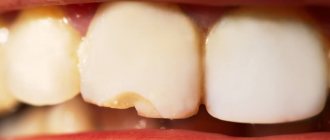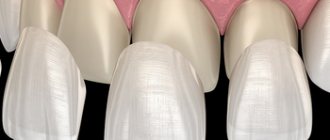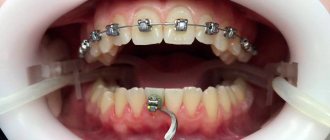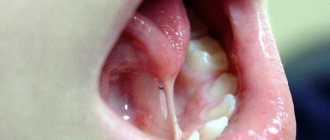In a modern city you can hardly meet a large number of people who do not have a single filling. Fillings, crowns, dentures, and pulpless teeth are all part of the dental treatment needed to keep your teeth healthy.
However, we want not only health, but also beauty. And in pursuit of a snow-white smile, we often remember about fillings and crowns only when the filled teeth begin to differ sharply from the rest. After all, it is more difficult to whiten teeth with fillings or lack of pulp. What is the reason, and what to do about it?
Teeth whitening with fillings
Whitening such teeth, especially when it comes to chemical bleaching, depends on which teeth have fillings. In general, such whitening is not recommended for teeth with fillings: the enamel will lighten, and the filling will remain the same color as it was, an unsightly dark spot. Other options are either completely replacing the filling with a new one of a lighter shade, or installing veneers, thin ceramic plates that can be visually matched to exactly the same color as the bleached enamel.
Another option for whitening filled teeth is air flow whitening, which is, in fact, a very gentle and mild whitening option. This procedure removes plaque and tartar, giving the enamel its natural white tint, but does not lighten it an additional few shades. With this bleaching option, the filling will not be noticeable.
If fillings are only on the back, chewing teeth, which are not visible when you smile, chemical whitening can be carried out quite calmly. Of course, in the absence of other contraindications to whitening, such as too thin or sensitive enamel.
How to whiten teeth at home?
All chemical preparations for teeth whitening at home, as well as professional ones, contain peroxide gels. They are applied using different devices:
- mouth guards – “covers” for teeth made of hypoallergenic plastic. They are filled with a special gel and worn for several hours a day;
- adhesive strips - stickers on teeth already impregnated with hydrogen peroxide or urea. A thirty-minute daily procedure will help brighten your smile by one or two shades in just a month;
- whitening gels and pencils - used in the same way as strips.
But Clarimed specialists recommend visiting a dentist before starting home whitening; our clinic even offers a free consultation; don’t risk the health of your teeth.
Whitening a pulpless tooth
Another obstacle to a perfectly white smile will be a pulpless tooth. Such teeth are essentially dead - during the treatment of pulpitis, the nerve is removed from them, and they are deprived of natural blood supply. Since nutrients also do not reach such teeth, dentin darkens over time - this is a natural process, and “dead” teeth, by definition, look darker than others.
Such teeth will also stand out from the general bleached row, unless intra-canal bleaching is performed. With this chemical whitening procedure, the reagent responsible for lightening the tooth will be applied not only outside, but also inside, into the cavity left after pulp removal. In this case, the filling that covered the tooth is removed, a temporary filling is placed during the course of procedures, and only after all whitening is completed, a new one is selected - a more suitable shade.
However, intracanal bleaching (as, in fact, chemical bleaching in general) is contraindicated in cases where:
- the patient has caries, pulpitis or periodontitis;
- the patient is allergic to hydrogen peroxide or has too sensitive enamel;
- The patient's age does not exceed 16 years.
It is important to know: intra-canal whitening cannot be performed on one tooth more than 3-4 times! When bleaching, the enamel is in any case subjected to serious chemical attack, and since the “dead” tooth is already weakened and is not restored by new nutrients, it can become too fragile and collapse.
Is it possible to whiten teeth at home?
Home whitening has a serious limitation - it does not carry risks if it is carried out on absolutely healthy teeth. If the neck of the teeth is exposed, there are cracks in the enamel and carious cavities, such procedures will only cause harm. Before using chemical gels, you should consult your dentist.
Folk remedies that are recommended for whitening are no less traumatic for enamel than professional chemical ones. The use of soda, charcoal, and lemon juice sometimes causes more harm than bad habits or injuries.
Teeth whitening with denture and crown
As we wrote earlier, changing the color of an already installed crown is extremely difficult, almost impossible, especially if the color does not match several tones at once. The best solution in such a situation would be to first carry out the whitening procedure, and only then select a ceramic or metal-ceramic crown that matches the color.
If you suspect that the teeth whitening procedure may be complicated, first of all you need to consult a specialist who will carefully examine your teeth and select the appropriate whitening treatment for healthy teeth, pulpless teeth, and artificial crowns. All this is possible and real, so there is nothing unnaturally difficult about it.
Make an appointment by calling 597-05-05 or using the online application form.
Contraindications
It is necessary to refuse the intracanal bleaching procedure in the following cases:
- with increased tooth sensitivity;
- for dental diseases and inflammatory processes of the oral cavity;
- if the patient has caries or periodontitis;
- women during lactation should refrain from the procedure;
- Whitening is contraindicated for children and adolescents under 16 years of age.
Any of these factors can lead to undesirable consequences, so if at least one of them is present, you should think about the advisability of whitening and weigh all the possible risks.
Prices for installing a light seal
The cost of installing a light filling will largely depend on the dental disease that needs to be treated and also on the volume of filling material required for high-quality tooth restoration. If you need to put a small light filling on a tooth, then the price of the service can vary between 2000 -3000 rubles. Large fillings for caries that have severely damaged teeth are more expensive - from 3,000 to 4,000 rubles.
Installing a filling for pulpitis and periodontitis will cost even more. Here the price of treatment will range from 5 to 10,000 rubles.
You can find out the exact cost of a light filling only after visiting the dentist’s office and undergoing an examination! We would like to draw your attention to the following point: the service life of light fillings depends on the quality of the materials and on the level of professionalism of the doctor who will carry out the treatment and restoration of the tooth. The risks of complications after installing a filling also depend on these factors. If the doctor makes mistakes when treating deep caries and pulpitis, the tooth under the filling may begin to hurt. Naturally, a poorly installed seal can chip or fall out at any time. Therefore, when planning to put light fillings on your teeth, always carefully choose dentistry for your treatment!
Calculate the cost of treatment by taking a short test in 20 seconds!
Do not delay your treatment, because in this matter time plays against us.
What is important in the first 2 weeks after placing a filling?
Immediately after the filling is placed, the material is not yet completely polymerized and may have micropores that are easily filled with coloring food products. This could be wine, chocolate, berries and other “bright” foods. Try not to eat such tasty things and not drink red wine for the first two weeks, but if it is simply impossible, immediately after eating, rinse your mouth with water and, if possible, brush your teeth with a toothbrush and toothpaste. After 2 weeks, a high-quality filling will no longer be stained.
Principles of caring for metal-ceramic crowns
To prevent darkening of fillings and crowns, it is important to provide competent and systematic oral care. As mentioned above, basic hygiene rules include regular brushing of teeth twice in the morning and evening, rinsing after each meal, as well as visiting the dentist for prevention and cleaning of dental plaque at least once every six months.
If you have a bridge in your mouth with metal-ceramic crowns, it is important not to forget to clean the rinsing channel located between the gum and the structure. An irrigator is ideal for these purposes. Experts in the field of prosthetics also provide the following recommendations regarding the care of metal ceramics:
- try to avoid temperature changes in food and drinks, due to which the porosity of the material increases and it turns yellow,
- If possible, avoid coffee and strong black tea, since these drinks quickly lead to staining,
- You should not gnaw hard foods with your teeth or crack the shells of nuts and seeds.
An irrigator is an additional device for maintaining oral hygiene.
To keep your teeth healthy and your smile snow-white, you need to pay enough attention to caring for and maintaining hygiene. Modern fillings are made from high-quality materials that cannot be stained for a long time. The same can be said about modern dental ceramics, which are distinguished by their durability, high aesthetics and color fastness. Therefore, with proper care, the material will not darken and will retain its aesthetic properties throughout its entire service life.
1According to data at the office. manufacturer's website: dentalpaint.ru.
Why is it better to do whitening after filling, but before prosthetics?
If you want to undergo a whitening procedure, but also have a filling, you still need to take care of your dental health first. For example, professional in-office whitening is carried out only after removing plaque and deposits, installing fillings or replacing them. You should immediately discuss your plans with your doctor and select the material of the desired shade.
As for prosthetics with crowns, this procedure can be carried out after bleaching. This will make it easier to choose a ceramic shade that exactly matches the current enamel color.
Cleaning steps
Cleaning a filling tooth consists of several preparation stages:
- you need to go to the dentist for a pre-cleaning;
- then comes the bleaching process itself;
- After this, it is necessary to restore the fillings of already whitened teeth: they are removed and refilled.
The lightening process occurs with bleaching agents, which the doctor himself selects individually for each person, since each product has its own bleaching power.
Attention: doctors do not recommend doing any procedures related to the oral cavity during inflammation.
What are fillings and how do they appear in your mouth?
I bet you have at least one dental filling. If not, then you know exactly what it is. Teeth after damage by caries and removal of the affected areas need to be restored. Doctors most often do this by filling the resulting defect with a light-curing composite filling material. Composite fillings are a perfect color match and are quite durable, but will not last forever. As a result, a “filling” is a composite material that the doctor used to close the cavity in the tooth after removing carious tissue. The average service life of a filling is 3-5 years.
We placed a light filling on a tooth: when can you start eating?
Light fillings are strong and reliable, and some dentists say that the patient can start eating almost immediately after their installation procedure. However, it will be healthier to refrain from eating for about 1-2 hours after you have a light filling placed on your tooth.
For three to four days after the light filling is installed, it is recommended to refrain from eating too hard foods and foods with coloring pigments. If you eat sweets, do not forget to rinse your mouth, because sweet and starchy foods provoke the active proliferation of carious bacteria.
Ultrasonic cleaning and its effectiveness
You can restore the natural whiteness of your smile and lighten artificial crowns a little using the procedure of Prof. hygiene. The method involves cleaning teeth from plaque and deposits, and today various technologies are used for this purpose, including an ultrasonic scaler. This is a hardware technique that involves delivering ultrasonic waves and microvibrations through a special tip, which literally break hardened deposits into tiny particles. At the same time, a jet of water is supplied, which removes dirt and also protects the enamel surface from overheating.
As part of comprehensive hygiene, ultrasonic or laser cleaning is usually combined with sandblasting of enamel using an Air-Flow device. This is a mandatory preventive procedure that should be performed every six months. But here it is worth noting that it will not help whiten either fillings or crowns. Lightening occurs only by removing plaque and deposits.
The photo shows the method of brushing teeth with the Air Flow system.
How to paint metal ceramics
One of the options for lightening fillings and crowns is to stain them. For this purpose, various compositions are used today: liquid enamel, professional dental paints and varnishes. Recently, Dental Paint has gained particular popularity. One of its main advantages is that it allows you to paint even hard-to-reach places, and also successfully solves the problem of darkening of filling materials, crowns and dentures. With its help, you can achieve lightening of up to 10 tones, and at the same time the result will look natural1.
Dental Paint can be used to lighten teeth
However, this method also has one significant drawback - the effect will be short-lived, so the procedure will soon have to be repeated. This method is similar to applying makeup, because the paint will be washed off after the first brushing of your teeth. Yes, and you cannot use such products on an ongoing basis, since this can lead to the destruction of the filling or crown. The materials from which they are made do not absorb paint, so it is impossible to change their color in this way. In such cases, dental experts recommend timely replacement of restorative materials and prostheses.











